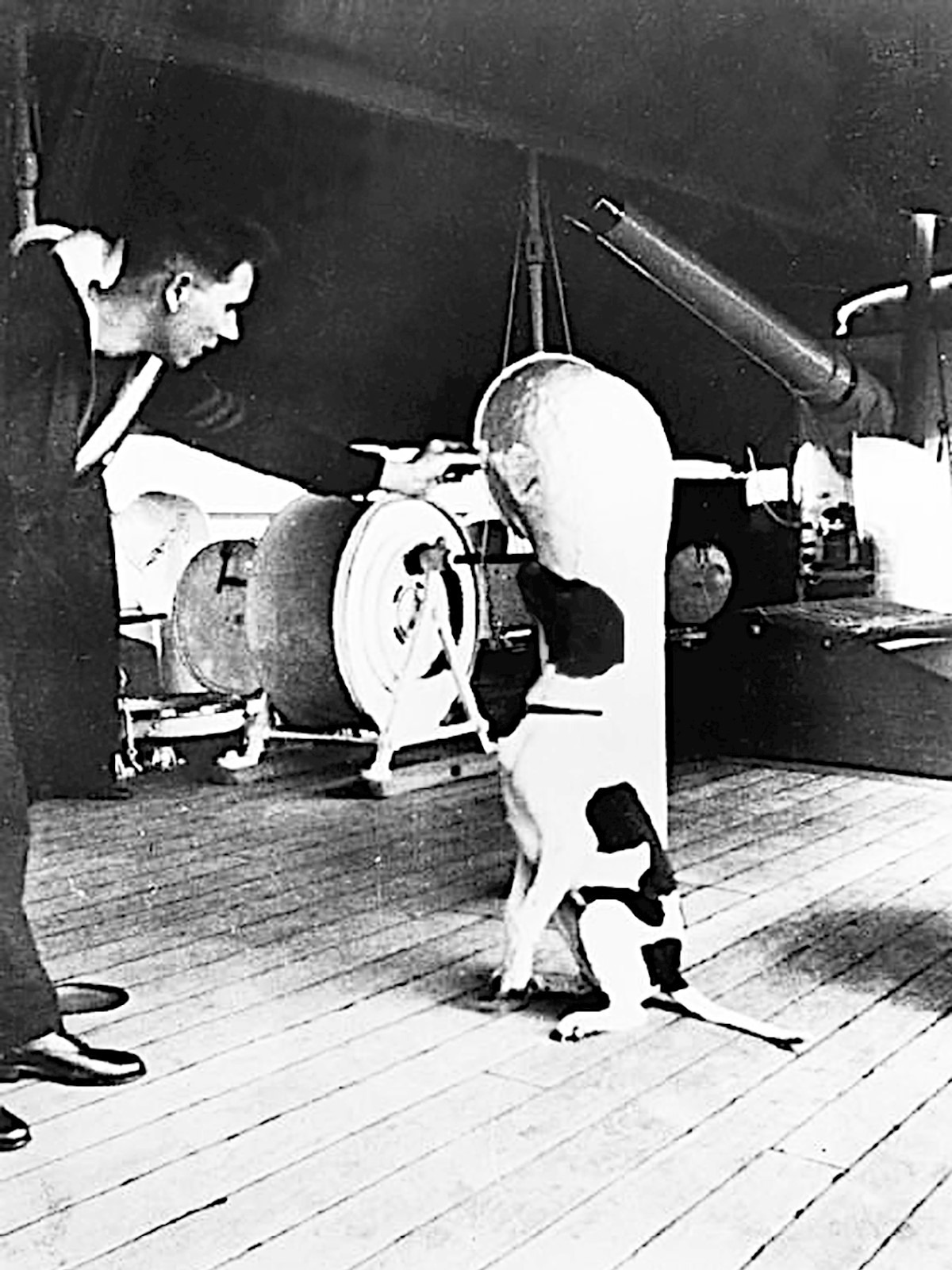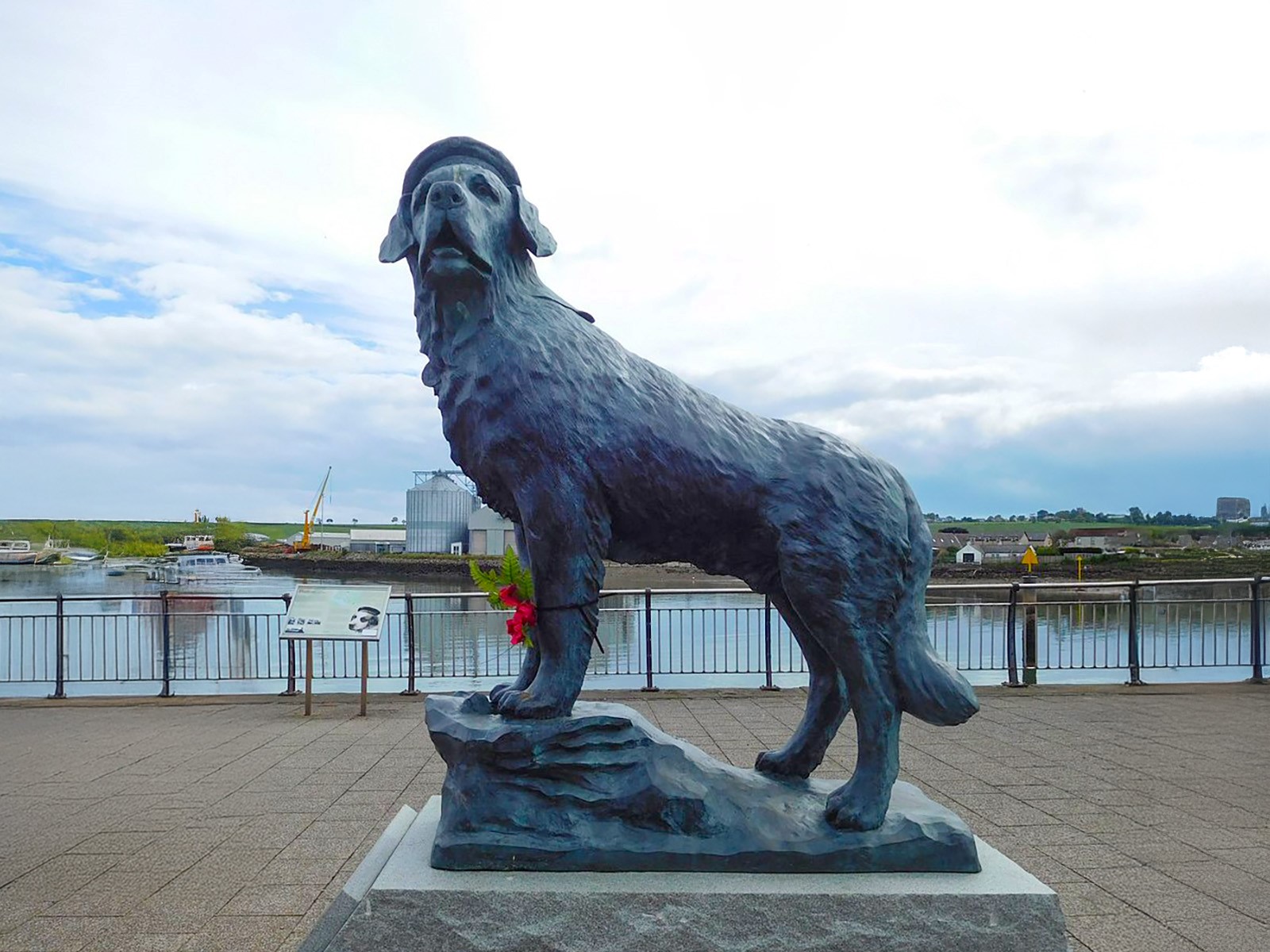Seafaring Dogs That Made History
Dogs are not just our best friends; they have also been able to leave their mark on the course of history. Some of them went into space, while others served medicine. And some of them conquered the seas!
The dog that saved Napoleon's life
Napoleon, who did not like dogs at all and suffered a lot from Josephine's Fortune, owing his life to a sailor dog is a remarkable story. Napoleon, in exile on the Elba Island in Italy, plans an escape. He will escape to the French Vessel Inconstant in a small boat and from there he will return to his homeland and reclaim his throne. He leaves the island in a small boat on a stormy night. But in the middle of the route, he gets excited and stands up, only to find himself in the water. In the rush, no one notices that Napoleon has fallen into the water, except the black-and-white Newfoundland on the boat! This dog, whose name is unknown to us, immediately jumps into the water and rushes to grab Napoleon, who is on the verge of drowning. It manages to keep the king afloat until the people on the boat realize what just happened and turn back. Because Napoleon does not know how to swim. Thus, Napoleon, saved from drowning, gets his crown back. But only a few months later, he loses everything at Waterloo.

Norwegian folk hero: Bamse
Bamse, the mascot of the Norwegian minesweeper Thorudd with 18 crew members in World War II, was a massive Saint Bernard. In fact, his name means "cute bear" in Norwegian. He was so strong that he knocked down and neutralized a crew member brandishing his knife in a fight, and pulled another crew member, who had fallen overboard, to the deck by jumping into the water. Never leaving the ship's turret during times of war, Bamse wore a helmet like the other soldiers. When he was on land, he would take the bus with the pass around his neck, go downtown and find the drunken sailors one by one and escort them home. Having thus become a national hero, Bamse appeared every year at official ceremonies on Constitution Day. His sudden death caused so much grief that his funeral was attended by 800 children. His statue was erected in Montrose many years later.
Tang, who saved the entire crew from drowning
Newfoundlands, with their webbed toes and waterproof fur, have always been great swimmers and lifeguards, saving thousands of lives. Tang, the dog of the SS Ethie, which operated as a supply ship in the North Atlantic between 1900 and 1919, was one of them. With a difference! He saved all 92 crew members on board when the ship sank after crashing into rocks in a storm. The crew's only chance of survival at that moment was to tie the 805-meter-long rope to the shore by swimming through the icy waters of the North. The only being capable of doing that was Tang. He was already ready for it. He immediately jumped into the dark waters and carried the rope in his mouth to those waiting on the shore. Sailors reached the shore one by one, holding on to the rope as the ship sank. Tang's story was such a sensation that he was almost declared a national hero. An insurance company, Lloyds of London, took advantage of the situation and awarded Tang with a medal.

Judy, the symbol of courage in World War II
Among the crew of the British ship HMS Grasshopper in World War II was an English Pointer named Judy. Judy would spot approaching planes well in advance and warn the crew. The crew of the ship sunk by a Japanese submarine on 14 February 1942 were so fond of Judy that they kept her with them. Judy saved the crew's lives by finding a source of clean water in the East Indies during a long escape journey. But they were eventually captured. The crew insisted to the Japanese that Judy be treated as a prisoner of war. Eventually joining the prison of war under serial number POW81A, Judy became the only dog to be granted prisoner of war status and dedicated herself to protecting the ship's crew. She barked at the guards in the camps, kept the enemy at bay. She warned the crew against snakes and other reptiles. She also carried food to starving sailors. They changed camp many times. She once saved many people from drowning when the transfer ship Harugiku Maru sank. She was shot one day, disappeared, and came back safe and sound. She was a morale booster for the prisoners throughout the war. She did it so well that after the war she was awarded the Dickin medal at a ceremony.


